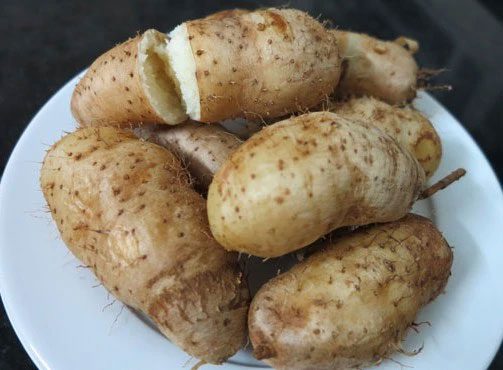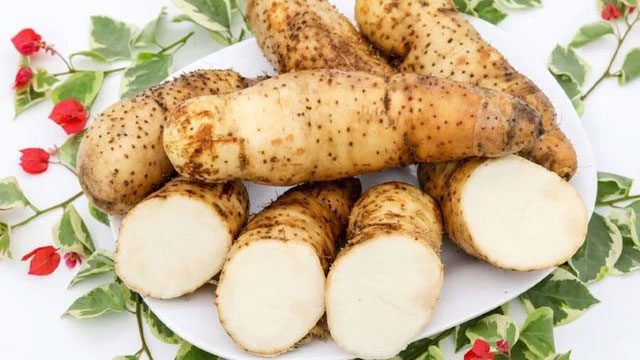In Traditional Chinese Medicine, this is a golden food for the cold season with many nutritional values.
The Health Benefits of Taro that Few People Know
Taro is a type of root vegetable belonging to the brown tuber family, also known as taro root, with the Sino-Vietnamese name being thổ noãn or thổ vu. In Traditional Chinese Medicine, this root is classified among the top quality tuber foods, often referred to as “the common man’s ginseng” due to its various health-enhancing properties.
In 100g of taro root, there are 1.5g of protein, 21.5g of carbohydrates, 1.2g of cellulose, 28mg of calcium, 30mg of phosphorus, and 0.2mg of iron. Additionally, this food also contains polysaccharides, diosgenin, and other components.


Taro root.
Good for the Brain
Taro contains diosgenin, a compound capable of promoting the growth of brain nerve cells and keeping the brain healthy. Furthermore, diosgenin also helps improve memory and cognitive function. Therefore, incorporating taro into your diet can effectively enhance and strengthen brain function.
Cancer Prevention
The components of taro include a high amount of vitamin C, a small amount of vitamin A, and beta carotene. These substances are all powerful antioxidants essential for the body.
These antioxidants act to eliminate harmful free radicals in the body, thereby limiting the formation and development of cancerous cells.
Blood Sugar Control
Consuming taro in appropriate amounts, with its rich potassium content, effectively helps control blood sugar levels. Additionally, potassium aids in preventing high blood pressure and helps lower blood sugar levels.
Improves Digestion
Taro is rich in fiber and vitamins, which play a crucial role in stabilizing the digestive system. Regular consumption of taro can help prevent common digestive issues such as bloating, abdominal discomfort, and digestive disorders.


















































